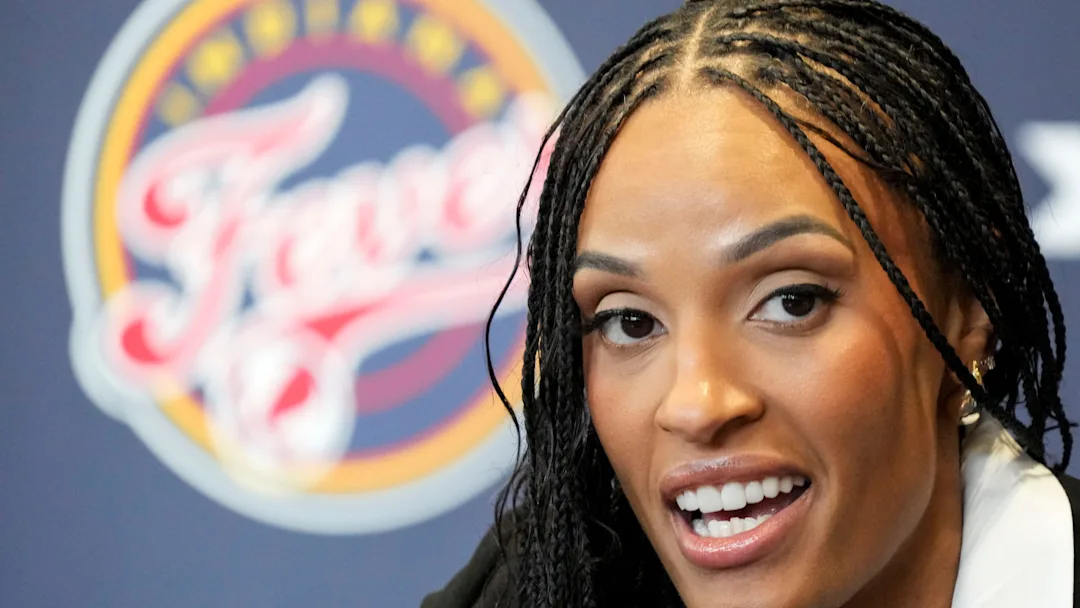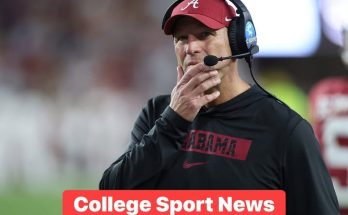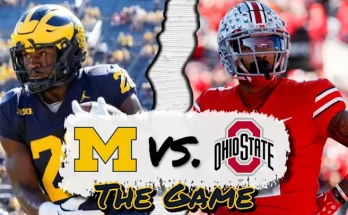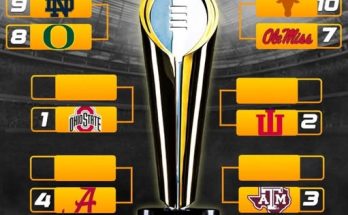WNBA Insiders Explain Why DeWanna Bonner Selected Fever Rather Than Mercury and Lynx
WNBA Insiders Explain Why DeWanna Bonner Chose Fever Over Mercury and Lynx
DeWanna Bonner, one of the most seasoned and successful players in the WNBA, made a major decision in her career that has been closely watched by both fans and analysts alike: her choice to sign with the Indiana Fever over other possible suitors, including the Phoenix Mercury and Minnesota Lynx. Bonner’s move has sparked widespread discussion and speculation, with insiders and experts eager to understand the factors that led to her decision. This article delves into the key reasons behind Bonner’s choice, drawing on insights from WNBA insiders and examining the broader context of her career, the respective teams’ strategies, and the evolving dynamics of the WNBA.
Background: Bonner’s Career to Date
DeWanna Bonner has long been considered one of the most dynamic and versatile players in the WNBA. Drafted by the Phoenix Mercury in 2009, Bonner quickly established herself as a force in the league. Known for her incredible athleticism, sharp shooting, and ability to play both forward positions, Bonner was an instrumental part of the Mercury’s championship-winning team in 2009. Over the years, she earned multiple All-Star selections and was consistently one of the league’s top performers.
Her time with Phoenix saw many successes, but it also witnessed a shift in team dynamics. The Mercury, while still competitive, faced challenges in maintaining their championship-level form. After several seasons of rebuilding and adjusting their roster, Bonner’s contract was set to expire, and she became one of the most coveted free agents in the league. During her free agency, she was courted by various teams, including the Mercury, who had a longstanding relationship with her, and the Minnesota Lynx, who had been perennially competitive.
However, in a move that surprised many, Bonner chose the Indiana Fever, a team in a different phase of its franchise development. This decision left analysts and fans questioning why she made that choice over two teams that might have appeared to be more championship-ready.
The Appeal of the Phoenix Mercury
To understand Bonner’s decision, it’s essential to first examine why the Phoenix Mercury was a logical option for her. Phoenix has been one of the most successful franchises in the history of the WNBA. The team, led by head coach Sandy Brondello and featuring star players like Diana Taurasi and Brittney Griner, has consistently been a contender. For Bonner, who had spent over a decade with the Mercury, the familiarity with the team and organization was a major advantage. Her comfort with the system, the coaching staff, and her teammates was a factor that cannot be understated.
Moreover, the Mercury has long been a contender for championships, making it a desirable place for a veteran player like Bonner, who is in the later stages of her career and looking to secure another title. Phoenix had the pieces in place to challenge for a championship, with the aforementioned stars and a solid supporting cast. For a player with Bonner’s caliber and hunger for success, the prospect of adding to her already impressive career achievements would have been enticing.
However, insiders suggest that there were several factors at play that ultimately led to her decision to look beyond Phoenix.
Challenges Within the Mercury: A Changing Landscape
The Phoenix Mercury has undergone significant changes in recent years, particularly with regard to roster construction and internal dynamics. While the team had some of the best players in the league, there were internal tensions and ongoing uncertainties surrounding the franchise’s future. With Diana Taurasi aging and Brittney Griner’s availability often in question due to various off-court issues, the Mercury’s path to a championship was becoming less certain. Additionally, the Mercury had a fluctuating roster, with several key players coming and going, which could have played a role in Bonner’s decision.
One insider noted, “Bonner had been with the Mercury for over a decade. She saw the changes, the constant shifting of roles, and the pressure that came with trying to keep up with a team that was always expected to be at the top. It’s not easy to stay in that high-pressure environment for so long, especially when the championship window starts to close. I think she recognized the need for a fresh start.”
This shifting dynamic may have contributed to Bonner’s desire to explore new opportunities outside of Phoenix. The Mercury’s championship window was no longer as wide open as it once had been, and the uncertain future could have prompted Bonner to look for a more stable and growth-oriented environment.
The Case for the Minnesota Lynx
The Minnesota Lynx, another top team in the WNBA, also made a strong pitch to Bonner. The Lynx, led by head coach Cheryl Reeve, has been one of the most successful franchises of the past decade, with multiple championships and a history of developing top talent. The Lynx have consistently been contenders in the WNBA playoffs, and their established system and championship pedigree made them an appealing destination for any player, especially one with Bonner’s credentials.
However, insiders point out that while Minnesota has a proven track record of success, the team’s roster was beginning to show signs of age. With players like Sylvia Fowles nearing the end of their careers and other veterans also facing the twilight of their playing days, the Lynx may not have represented the long-term stability that Bonner was seeking.
A WNBA analyst commented, “The Lynx have a great culture and a winning tradition, but the window for them to win another title is narrowing. Bonner is at a stage where she’s looking not only for immediate success but also for an opportunity to build something new.”
Bonner, who has always been known for her ability to adapt and thrive in different roles, might have recognized that joining Minnesota could involve fitting into an already well-established system. She might have preferred a situation where she could have a more significant impact on the team’s future development, which could explain her decision to bypass Minnesota in favor of a team with a younger, up-and-coming roster.
The Appeal of the Indiana Fever
When the Indiana Fever made their pitch to Bonner, it was clear that the team had a different type of appeal. The Fever, while not in the championship conversation in recent years, offered a fresh start and the chance to be part of a rebuilding project. With a young core that included players like NaLyssa Smith and Kelsey Mitchell, the Fever were building a team with significant upside, and Bonner could have seen the opportunity to help shape that future.
One insider pointed out, “Indiana is a team that’s in the early stages of a rebuild, and Bonner saw the chance to be a foundational piece. She could come in, provide leadership, and help mentor younger players, while also being a star on the court. This was a situation where she could have a larger impact on the team’s direction.”
Bonner’s versatility and experience made her an ideal player for a team like Indiana. As a veteran presence, she could bring invaluable leadership to the Fever’s locker room and on the floor. She would be able to contribute immediately, but she would also have the opportunity to develop the team alongside the younger players. In contrast to Phoenix and Minnesota, where Bonner would have been a complementary piece to established stars, in Indiana, she could assume a more prominent role and help define the team’s identity.
Additionally, the Fever’s long-term strategy, centered on building around young talent and developing a sustainable system, may have resonated with Bonner. The chance to be part of something new and to have a lasting impact on a team’s development could have been a key factor in her decision.
The Personal Aspect: Family and Legacy
Beyond basketball, Bonner’s decision was also influenced by personal factors. As a mother, Bonner has frequently spoken about how her family life plays a significant role in her decision-making. The proximity to her family, her comfort in a new environment, and her ability to balance her professional and personal life were all likely considerations. While both Phoenix and Minnesota are established markets, Indiana may have provided a setting that allowed her more time with her family and a different lifestyle.
Additionally, Bonner may have seen the move to Indiana as a legacy-building opportunity. By helping lead a team through a rebuilding phase and back to championship contention, she could have solidified her place as one of the most influential players in the WNBA. Joining a younger team could also offer her the chance to extend her career in a meaningful way, continuing to play at a high level while guiding a new generation of players.
Conclusion: A Fresh Start and New Challenges
In the end, DeWanna Bonner’s decision to join the Indiana Fever was driven by a combination of factors: the desire for a new challenge, the opportunity to play a leadership role on a rebuilding team, and the possibility of having a lasting impact on the franchise’s future. While the Phoenix Mercury and Minnesota Lynx offered established teams with championship aspirations, Bonner saw an opportunity in Indiana to shape the future of the Fever and build something meaningful from the ground up.
For Bonner, this decision represents a new chapter in her storied career. It’s a chance to contribute to a team on the rise, while also positioning herself as a mentor and leader for the next generation of WNBA stars. The Fever, in turn, will benefit from her experience, versatility, and leadership, as they work to return to playoff contention in the coming years.
Ultimately, Bonner’s choice is a testament to her growth as a player and person. While championships and titles are always a significant part of the equation, Bonner’s decision reflects her desire to leave a lasting legacy and contribute to the future of the WNBA in a meaningful way.



